New England
New England Fall Foliage | 2019 Forecast
Planning a New England autumn adventure? Our forecaster predicts long-lasting color with an emphasis on softer oranges and yellows. Read on for the full New England fall foliage 2019 forecast.

Coffee By Design | Portland, Maine
Photo Credit : Katherine Keenan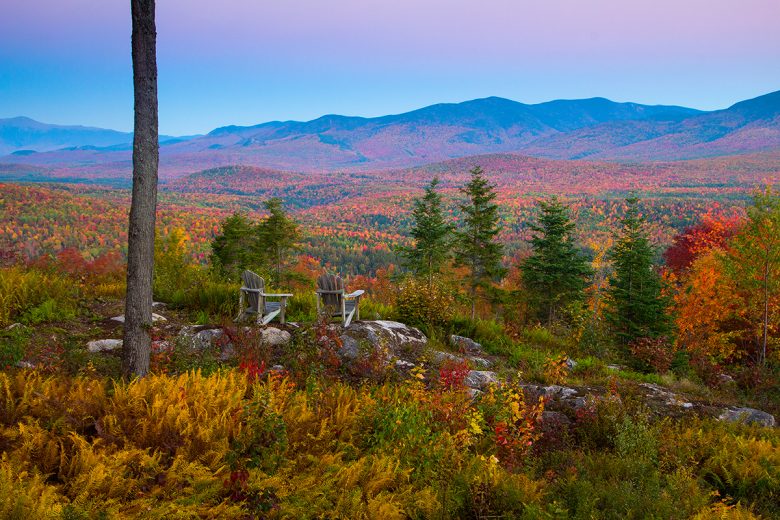
Photo Credit : Jim Salge
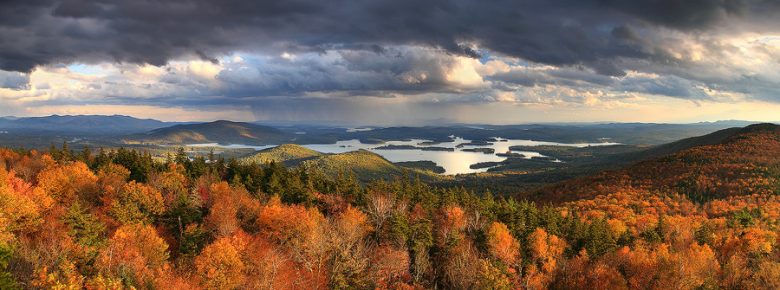
Photo Credit : Jim Salge
New England Fall Foliage 2019 | Weather Influences
A Long Winter
The 2018 New England fall foliage display arrived late, and many leaves were still on the trees when early snows arrived. Wildcat Resort in the White Mountains opened in October for its earliest skiing ever, and the Crown of Maine saw its snowpack set in for good by early November. In southern New England, oak leaves fell on deep snow from a nor’easter the week of Thanksgiving. Early storms like these can bring damage to the forests, but overall the trees seemed to have weathered them well.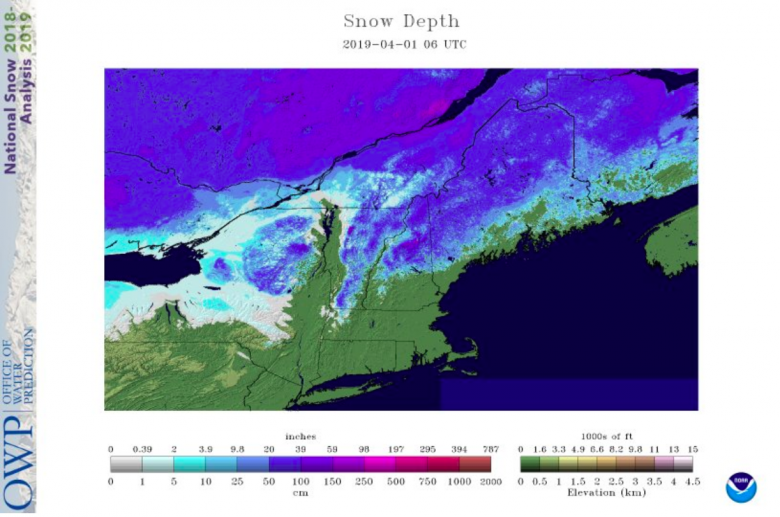
Photo Credit : NOAA NOHRSC
A Wet Spring
Spring was consistently wet and cool across New England. Portland, Maine, saw rainfall on 25 days between April 1 and May 15, the most ever during that period. The cool, cloudy weather delayed leaf-out in southern New England even as lingering snowpack was doing the same in northern New England.
Photo Credit : Jim Salge
A Hot Summer
Summer has been hot and humid, with adequate rainfall from frequent thunderstorms. July set records as the hottest single month ever in many locations across the region. However, this wasn’t a dry heat, the kind that significantly affects the forests; instead, it was combined with consistent humidity, which limited cooling overnight and pushed average daily temperatures over the record mark. It might have made for uncomfortable sleeping, but at least it means drought won’t be a factor in this year’s fall foliage outlook.New England Fall Foliage 2019 | Natural Influences
Nuts & Seeds
A year ago at this time, we were in the midst of an unprecedented event known as Squirrelpocalypse, which saw squirrels by the millions meeting their demise on the roadside. The reason? All the tree species in the forest that normally would have produced supplies of nuts and seeds had failed, which meant huge numbers of wildlife were on the move seeking food. This year is an entirely different story, as oaks, beeches, hickory, and, most impressive, maple are having “mast years,” which means the trees are producing a bumper crop of nuts and seeds. (In fact, the maple helicopters were so heavy this spring that the trees appeared red with seeds well past leaf-out.) But with much of the trees’ energy going toward producing these seeds, the leaf canopy seems a bit thin heading into fall.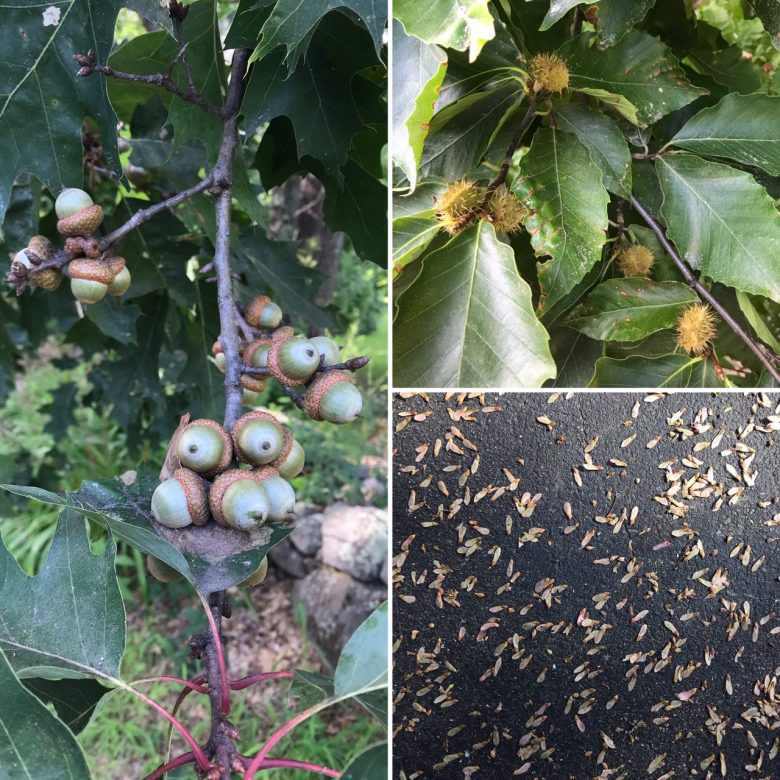
Photo Credit : Jim Salge
Fungi & Bugs
This year’s wet spring was a bit of a double-edged sword for New England forests, since it was great for the growth of all kinds of fungi — some good for fall foliage prospects, some not. For instance, a fungus called Entomophaga maimaiga has helped keep the leaf-feeding gypsy moth caterpillar in check this year. However, the fungi that cause anthracnose, an infection that causes leaves to brown prematurely, also are primed by wet springs, and they will have a higher-than-average effect this year. (A wet fall could be particularly bad in this context, as outbreaks tend to spread in wet, cool weather.) Notably, anthracnose has been seen most often in combination with the first widespread outbreak of the oak shothole leafminer, a fly that turns oak leaves into Swiss cheese.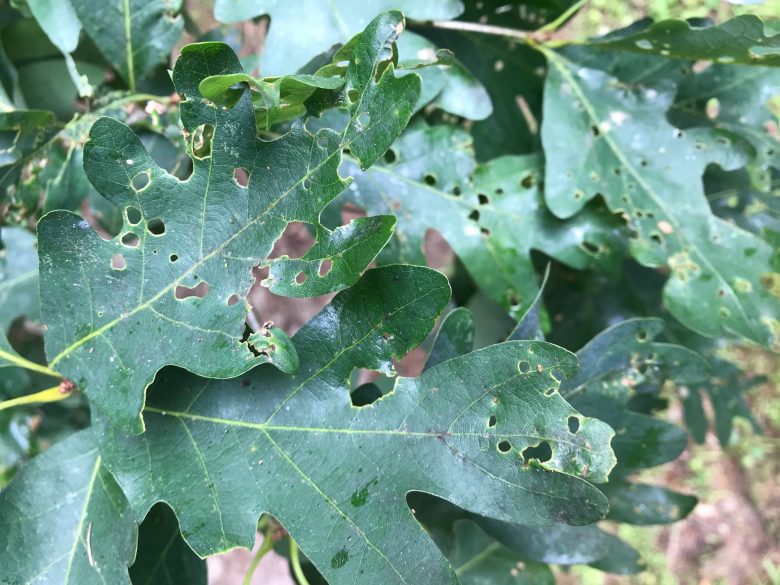
Photo Credit : Jim Salge
New England Fall Foliage 2019 | Long-Range Weather Forecasts
Long-range forecasts are based on a number of large-scale ocean and atmospheric patterns that set up in predictable ways. The most well known of these is El Niño/La Niña, which is currently moving into a neutral state. Neutral periods have links to increased tropical activity across the Atlantic seaboard, though it’s impossible to say if any of these storms will impact New England. Overall forecasts for the region are calling for warmer-than-normal fall temperatures and average amounts of rainfall. Cold fronts will become stronger as the season progresses, and humidity will cut back significantly, allowing temperatures to drop at night and kick-start the colors.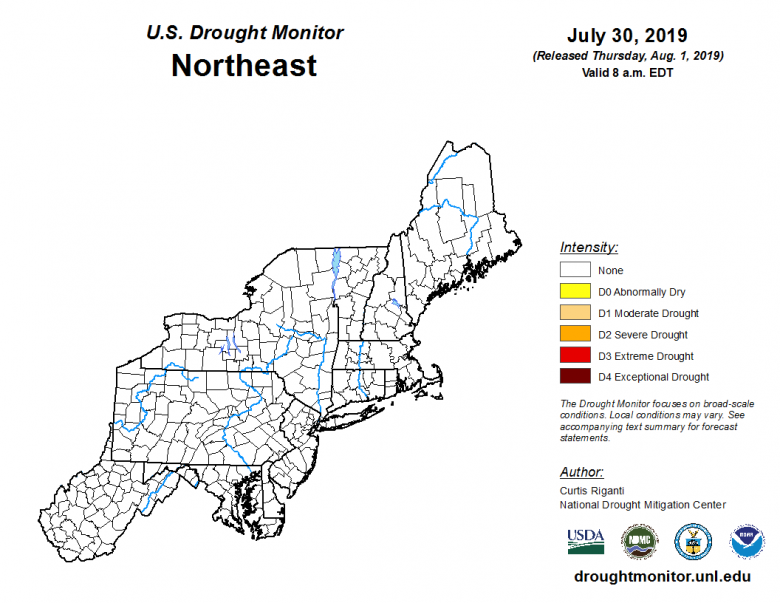
Photo Credit : NOAA/Climate.gov
New England Fall Foliage 2019 | The Official Forecast
New England’s fall foliage rarely disappoints, but some years feature bolder and longer-lasting colors than others. In general, you want a seasonably mild and reasonably wet spring, a summer with adequate rainfall and, most important, plenty of warm, sunny days and clear, cool nights in the weeks leading up to autumn. Despite a slightly cooler-than-normal spring, we are generally on track for a typical year. The canopy trees, especially maples, are a bit thin, and there is some fungus and premature browning amid the landscape. But insect damage has been lower than average, and we’ve avoided the stresses of a drought.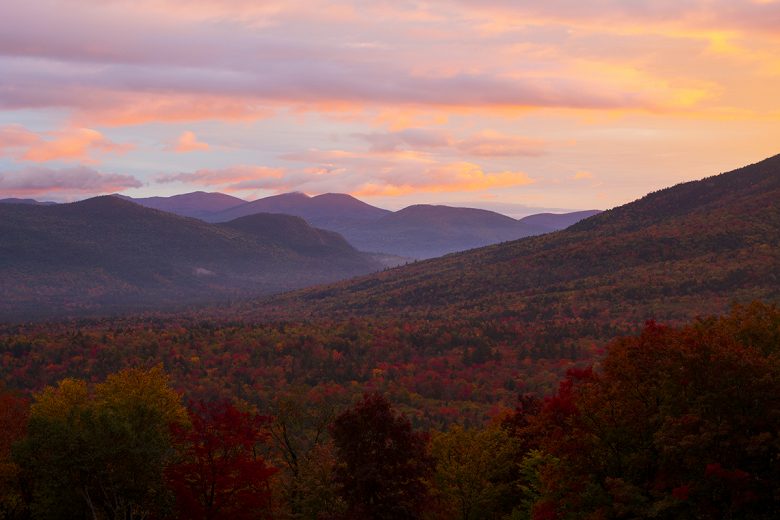
Photo Credit : Jim Salge
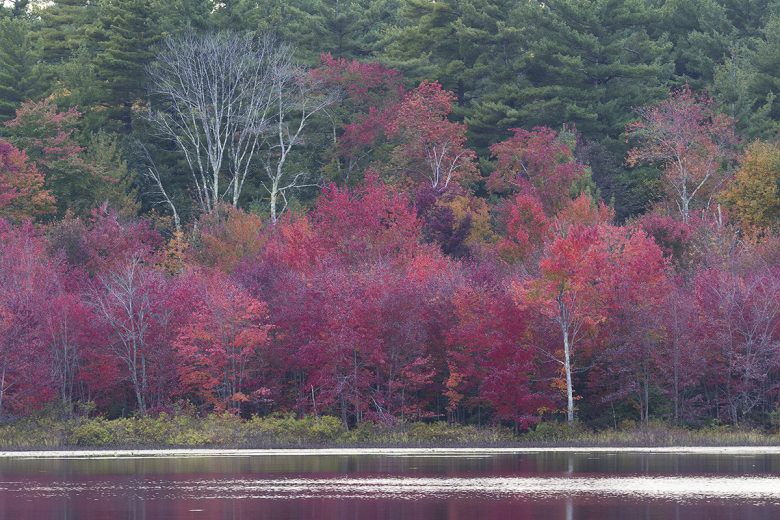
Photo Credit : Jim Salge








Live near Bristol UK but have been lucky enough to visit Canada and see the Maples but more recently visited Vermont and other wonderful places in New England!
If I am going to Waterberry Vermont on September 15 and 16, will that be too soon to see vibrant colors in Stowe?
We are planning to take a trip into NE to see the leaves when we leave our DC vacation on October 27. We were thinking thru the Berkshires – Sturbridge, Lennox, Williamstown, Woodstock VT etc. Do you think we will still see some fall colors so late?
It’s unlikely there’ll be any color left by then.
Darn! Was hoping to see the bold reds this year. Will the soft orange hues be all throughout New England? Are there some areas that might have more red colors?
Thank you
Pray for cool nights and sunny days! This promotes the sugar formation in the leaves that give them the red and purple hues. But beware of early frost, as all bets are off for the reds and it will also have a negative effect of leaves staying on the trees long enough to produce even the yellow and orange.
We are planning a New England vacation . I would like to know places to stay in Stowe, Vermont , and places in Connecticut, Massachusetts, Pennsylvania, New Hampshire to see ??
Check out TripAdvisor’s Accommodations and Things To Do sections.
How will Dorian affect colors in Maine and along the coast generally?
Hi Jim, Thanks for nice article. Do you know the place where the 1st pic in this article is taken. I really need to visit this place 🙂